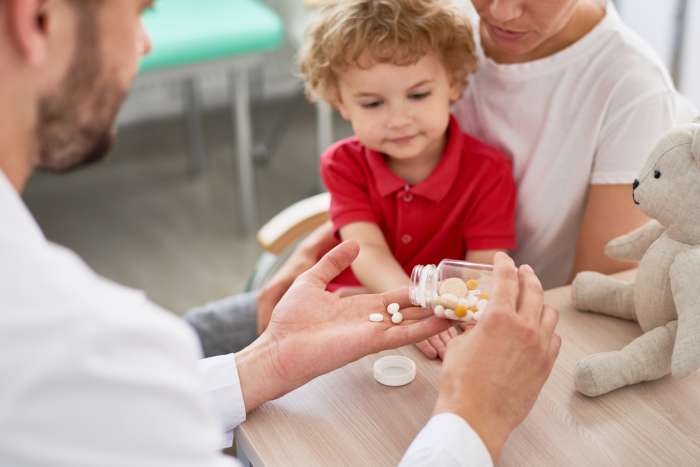Iron is an important mineral that has many functions in our bodies. It not only makes hemoglobin, which is the major component of red blood cells but also helps red blood cells carry oxygen throughout the body.
When children don’t get enough iron, the number and size of their red blood cells decrease, leading to anemia. Anemia can cause fatigue and weakness, among other health problems.
Related: Symptoms of Iron Deficiency to Look Out For
To avoid iron deficiency in your child, it’s important to be aware of just how much iron they need in their diets, and the best sources to find it. This information will help you make informed decisions about your children’s health when it comes to their iron intake.
How much iron do babies need?
Iron intake in infants between six and 12 months of age is recommended at 11 mg per day. According to the American Academy of Pediatrics, iron deficiency and iron deficiency anemia during infancy and childhood can have long-lasting detrimental effects on neurodevelopment that may not be reversible.
Your baby’s source of nutrition can weigh heavily on his or her iron levels. According to the CDC, babies fed only breast milk, only formula, or a mix of the two have different needs when it comes to iron. Breast milk does not have much iron, so if your baby is exclusively breastfed, you’ll want to talk to your pediatrician to see if any iron supplements are necessary to meet your child’s iron needs.
Children Obsessed with Food: Does My Kid Have a Food Addiction?
Many children even as young as a 3-year-old may show signs that they have an unhealthy relationship with food. Read More
When it comes to infant formula, there are iron-fortified formulas to help babies reach their recommended iron intake. In these cases, supplements are not needed as may be the case with breastfed babies. Always talk to your pediatrician before switching formulas or giving your baby any supplements.
How much iron do toddlers need?
For toddlers and young kids between 1 to 3 years old, the recommended iron intake is 7 mg daily according to the American Academy of Pediatrics.
At this age, children can begin to get their iron requirements from solid foods. This is a good time to instill healthy eating habits, especially for children who tend to be picky eaters.
How much iron do kids and teens need?
The amount of iron that a child requires each day is actually not much less than what an adult needs. Here are the general guidelines for the number of iron old kids and teens need per day depending on their age.
As children reach their teen years, the recommended iron intake differs between boys and girls. Adolescence is when puberty sets in and is a time of rapid growth. When girls begin menstruation, they need additional iron to replace what they lose monthly.
- Children between 4 to 8 years old should get 10 mg of iron daily.
- Older kids between ages 9-13 need 8 mg of iron per day.
- Teen boys aged 13 and older should get 11mg of iron a day.
- Teenage girls aged 13 and older should get at least 15mg of iron per day.
Symptoms of Iron Deficiency in Kids

Iron helps move oxygen from the lungs to the rest of the body and helps muscles store and use oxygen. If your child is not getting enough iron, you’ll begin to see some red flags in their behavior and everyday activities. These symptoms include:
- Behavioral problems
- Frequent infections
- Pale skin
- Fatigue
- Cold hands and feet
- Slowed growth
- Poor appetite
- Abnormally rapid breathing
If you notice any of these symptoms or suspect your child is not getting enough iron, a simple blood test can determine if they are iron deficient and have anemia.
Regardless of whether any symptoms are present, screening for anemia should be done when babies are one year old. Hemoglobin levels and a risk factor assessment of iron deficiency and iron deficiency anemia should be completed.
More screening can be done on children who are 1-3 years old and are at high risk for iron deficiency and iron deficiency anemia. Your pediatrician will determine if this screening is necessary.
Who's at risk of iron deficiency?
Some factors put a child at greater risk of becoming iron deficient. These include:
- Babies who have a low birth weight or who are born prematurely
- Babies who drink cow's milk or goat's milk before age 1
- Breastfed babies over 6 months who aren’t given other foods containing iron
- Babies who don’t drink iron-fortified formula
- Children who have been exposed to lead
- Children who don't eat enough iron-rich foods
- Overweight or obese children
Can kids take iron supplements?
Your pediatrician may recommend iron supplements if they don’t think your child is getting enough iron. Babies may be given liquid iron supplements. Chewable multivitamins can be given to children ages 3 and older. Never give your child an iron supplement, or any type of supplement, without first talking to your pediatrician.
Ask an Expert: How are the Iron Needs of Children Different from Adults?
According to Shari Nethersole a physician at Boston Children's Hospital and an instructor in Pediatrics at Harvard Medical School, the amount of iron that a child requires each day is actually not much less than what an adult needs.
For adult men, the recommended daily intake of iron is about 10 milligrams (mg), and for women, it's 15 mg. The more rapidly children are growing, the more iron they need. Thus, young children ages 6 to 36 months have high iron requirements.
Ways to help kids get more iron in their diets
Including iron-rich foods in your child’s diet is the best way to get the recommended amount of iron. Many different foods are rich in iron, so there’s even something for the picky eaters in your home!
Here are some foods that are good sources of iron:
- Iron-fortified cereals
- Lentils
- Red meat
- Certain breakfast cereals
- Prunes
- Citrus fruits like oranges
- Foods with vitamin C to help the intestine absorb more iron
- Dark green leafy vegetables
- Soybeans
- Avocado
Clams and oysters also have very large amounts of iron, but children may not like these types of foods just yet.
Making sure your child has the right amount of iron in their diet is key to their development. Discuss your child’s iron requirements with your pediatrician from birth so that you can get them off to a healthy start.
If you think your child is not getting enough iron, look for signs of iron deficiency and discuss them with your healthcare provider. Early anemia screening is key.
As your child gets older, you can provide iron-rich foods such as dark leafy green vegetables, citrus fruits, and red meat, among other selections to help them meet the recommendations.



